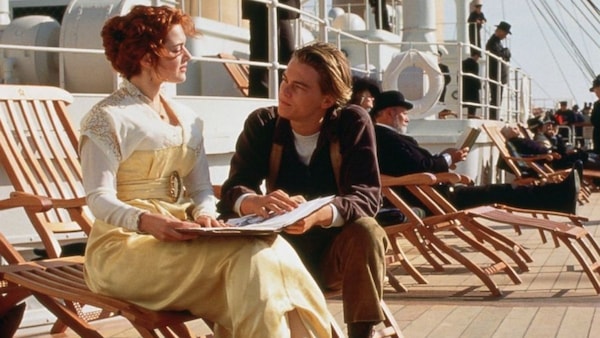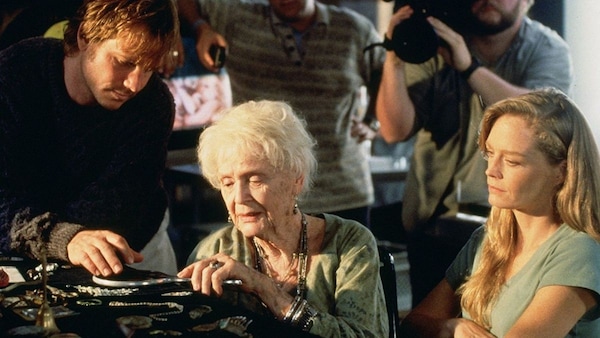Titanic turns 24: James Cameron’s 1997 masterpiece is a heady concoction of romance, history, spectacle
Almost a quarter of a century after its release, the legacy of Leonardo DiCaprio and Kate Winslet’s sweeping romance is too ubiquitous to ignore.

Last Updated: 10.12 PM, Nov 02, 2021
Titanic, James Cameron’s 1997 classic on timeless love, has enjoyed its share of unbridled celebration which was swiftly followed by equally scathing negative press that threatened to delegitimise the very legacy of the film. Despite its share of rocky patches, the historical heritage of this film, based on shipwreck and romance, is too ubiquitous for anyone to ignore.
A compassionate tale about selflessness and unconditional love, Titanic’s status as a notable phenomenon in pop culture, almost a quarter of a century after its release, still holds true. Leonardo DiCaprio and Kate Winslet’s pairing as Jack and Rose bolstered the actors’ position not only as Hollywood’s best, but also transformed them into faces of a collective romantic yearning. “Leo and Kate” became synonymous with eternal love, almost akin to the 90s’ version of Romeo and Juliet.

Having said that, a revisit of a film of such epic proportions needs a little more than just re-analysing the plot. Keeping aside the socio-cultural impact of the film, Titanic bears testament to Cameron’s commitment to detail, craft and his earnest need to invest in accessible storytelling. And though the spectacular special effects add to the visual splendour of Titanic, it only comes second to Cameron’s poignant narrative on togetherness.
True to his brand of filmmaking, Cameron has always pushed stories with generous dollops of both heavy-handed action and heart. Films like The Terminator (1984), Alien (1986), and True Lies (1994) had their roots deeply embedded in humanity, but were still high concept action films. Even Avatar (2009), Cameron’s magnum opus on nature and its fast-dwindling resources, required audiences to turn an empathic gaze into his universe. The complex characters and breathtaking CGI definitely added layers to the product as a whole, but the true essence of the film lay in understanding the story of a marginalised and disenfranchised alien race trying to take their rightful agency against ‘modern’ human colonisers.

On a similar vein, Titanic follows Cameron’s signature blend of heart and sensitivity, while simultaneously adding a touching melodrama with a sinking ship at its backdrop. Even though as viewers, we are well aware of the climax and Titanic’s ill-fated massacre, Cameron’s three-and-a-half-hour saga transports us into a world of heartache, panic and helplessness while he dabbles with underlying motifs of class divide and unrestrained romance.
Cameron’s compelling revisit of the events leading to the shipwreck almost forces participation from his audiences. By the time the calamity actually hits, most have already forgotten about it. And once it does, you are left with no choice but to root for the favourites, hoping they survive the onslaught. Cameron successfully upended viewers’ perverse voyeuristic film-viewing pleasures into that of heart wrenching sympathy. When deep-sea researcher Brock Lovett (played by Bill Paxton) says in the film, “I never got it. I never let it in,” referring to the allure that Titanic’s downfall had, he becomes the viewers’ collective proxy. It is only after a now-aged Rose recounts the riveting incidents of the horrendous night, that Lovett (and by extension, the audience) truly understand the pathos behind the narrative. Even though Titanic’s wreckage was heavily covered in non-fictional circles, Cameron’s film lent the historical event a beating heart.

The filmmaker’s ability to rewire historical perspectives speaks to his skill as a master storyteller, though he has often been hailed for his prowess mainly in technical fields. And understandably so. For example, in Titanic, the film’s opening sequence introduces viewers to a crudely animated recreation of what transpired on the night the Titanic sank (based on “scientific evidence”, we are told). When the ship hits the iceberg around the 90th-minute mark in the film, Cameron’s set designs expose a real-world version of that introductory PPT presentation that viewers nonchalantly whizzed past. He delivers an uninterrupted procession of increasingly helpless scenarios that build a sense of acute tension. Narrow doorways burst open from the relentless influx of water, congested frames of flooded docks, and claustrophobic hallways, present themselves one after another, creating a nauseating environment of desperation and dread.
However, the crowning glory of Titanic would have to be Winslet’s character of Rose DeWitt Bukater. Even if DiCaprio’s screen presence dominated the mass hysteria around the film, Titanic was about Rose’s self-actualisation from an oppressed turn-of-the-century woman into a free-thinking, modern feminist, who dared to abandon it all for the love she felt for a charming scoundrel. During Jack’s final moments, his dying wish is to ensure Rose’s safety – and to assure him of this, Rose promises him that she will “survive.” And therein lies Titanic’s crux – which revolves around a woman’s journey to emancipation. Rose’s search for an identity supersedes even the much-hyped romantic arc and outnumbers the titular passenger liner, almost by eight decades (when she is 100 years old). It is a narrative thread that follows her from the docks of the Titanic where she is seen sedately lacing her fiancé Cal Hockley’s (played by Billy Zane) overprotective arms.

Rose’s potent presence is yet another cinematic trope that Cameron’s films are known to highlight. Most of his films boast of strong-willed female characters, who are not only self-assured but manoeuvre the narrative on their own terms, breaking away from the reductive prototypes of Hollywood heroines. Neytiri (played by Zoe Saldana) in Avatar, Dr Lindsey Brigman (played by Mary Elizabeth Mastrantonio) in The Abyss, Sarah Connor (played by Linda Hamilton) in The Terminator and T2: Judgment Day, Ellen Ripley (played by Sigourney Weaver) in Aliens are all a part of Cameron’s legacy that champions women characters on screen.
Before its release, news of Titanic’s premiere caused a significant stir amidst film circles, with media outlets and magazines thoroughly covering the ostentatious budget of $200 million that went behind producing it. Bigwigs Twentieth Century Fox and Paramount Pictures had to unite forces to enable Cameron’s dream of a disaster film and a lot depended on its box office success. Expectantly, Titanic did not disappoint, garnering a whopping $1.84 billion worldwide, making it the first-ever feature film to touch the billion-dollar mark.

Critics and film trade analysts all hailed Titanic as a masterpiece and the few reports claiming Cameron was akin to Captain Bligh on sets (he allegedly screamed at technicians until they got things right), were quickly brushed under the carpet.
Titanic’s success at the Academy Awards in 1998 was only a delayed reaction to the maelstrom that the film had already evoked. Titanic enjoyed an unflinching top spot at the box office weeks after its release. As thousands thronged film theatres to experience this unique concoction of thrill, romance, history and spectacle, DiCaprio and Winslet’s star power only shot up several notches. However, Titanic’s pre-release had also stirred considerable ambiguity from certain factions of the film industry (mainly Cameron’s naysayers) who were sacrosanct that his obsession with the film’s packaging would compromise its quality. Cameron was cognizant of all these facts when he went on the Oscars stage to pick up the Best Director award. “I’m the king of the world!” he proclaimed…maybe to a room full of people who had little choice but to agree with him.

